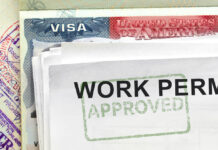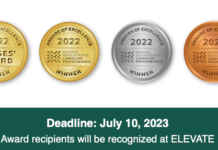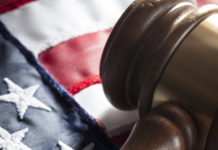This article is presented in conjunction with “H-2B: An Employer Perspective.”
The Immigration and Nationality Act (INA) of 1952, as amended, designates categories of foreign nationals who are admitted to the U.S. for a temporary period and specific purpose. One of these categories, the controversial H-2B visa program, allows for the temporary admission of foreign workers to perform nonagricultural labor if U.S. workers are not available. While a common hiring practice in the landscaping industry, in recent years, demand has exceeded supply.
By law, the H-2B visa is subject to an annual numerical cap. The current cap limitation is 66,000 workers per fiscal year (FY). Half, or 33,000, are issued for employers with a start date of employment from October 1 – March 31; the second half are issued for employers with a start date beginning April 1 – September 30. Already, for the second half of FY 2021, 96,641 workers were requested, with only 33,000 visas available. (See sidebar below for more on the basics of the H-2B program.)
Requests Are Triple The Visas Available
Seasonal businesses across the country continue to struggle with finding temporary seasonal labor, even during the current COVID-19 pandemic. While seasonal employers, like landscapers, are actively recruiting, many American workers aren’t currently seeking temporary employment for a variety of reasons. Some have returned to their former jobs as state restrictions eased; some are not interested in temporary often physically demanding jobs; and others are unable to work full time due to health or childcare considerations. Further complicating matters is that many seasonal industries are considered essential and have operated as normal since the beginning of the pandemic.
The economic viability of seasonal businesses will be critical to the economic recovery we all anticipate post-pandemic. Prior to the pandemic, business viability was severely impacted by the cap on H-2B worker admissions. The current cap of 66,000 annually was first enacted in 1992 and has not been revised or updated since. In the strong pre-pandemic economy, the need for supplemental workers was evidenced by U.S. government certification of workers well over triple the number of visas provided under the cap.
Even during the height of pandemic-related job layoffs last year, seasonal businesses in several sectors were unable to find available U.S. workers. The 33,000 H-2B cap for the first half of Fiscal 2021 was reached on November 16, 2020. During the first three days of January 2021, the DOL received requests for 96,441 H-2B workers with a start date of April 1, with only 33,000 visas available. Unless the U.S. Department of Homeland Security makes additional visas available under its authority in the FY2021 Omnibus and COVID Relief and Response Act (PL-116-26) or Congress passes meaningful H-2B cap relief, nearly two-thirds of needed seasonal jobs will remain vacant. This is at great detriment to seasonal businesses and their American workers whose jobs are supported by H-2B workers.
Common Misconceptions
There are many misconceptions of the H-2B program that have circulated both in the media and within the small business community. One major misconception is that the H-2B workers are employed because they are a source of “cheap labor,” yet the U.S. Department of Labor (DOL) sets a prevailing wage that will not adversely affect the local labor market. On top of a fair wage, each employer participating in the H-2B program will encounter filing fees to the government. There are also additional costs associated with hiring a legitimate agency to help facilitate the lengthy process to request approval.
Another misconception is that H-2B workers take away potential jobs from Americans. The DOL regulates testing of the local labor market. Each employer must give equal opportunity to all local applicants first, prior to obtaining certification to employ foreign labor. Many employers who use the H-2B program have difficulty finding and keeping enough U.S. workers due to the seasonal nature of their businesses. Most importantly, employers cannot lay off U.S. workers to replace them with H-2B workers. The DOL and Department of Homeland Security (DHS) work together to ensure that both American and H-2B workers are both protected in the program.
A third misconception is that the H-2B program is an option to provide work authorization to undocumented workers currently residing in the U.S. This is not the case. Each worker applying for an H-2B visa must do so at the U.S. Consulate or Embassy in his/her home country. When applying for a work visa each applicant must submit fingerprints, a photo, and an application to the U.S. Consulate. Any illegal presence in the U.S. could result in application denial.
It‘s also generally perceived that all H-2B workers have the intent of permanently residing in the U.S. However, as part of the consulate process, the H-2B applicant must prove they do not have immigrant intent. These workers leave their spouses, children, and immediate families for a temporary earning opportunity.
H-2B Basics
There are four different categories of temporary need: Seasonal; Peak Load; Intermittent; and One-time. Many landscaping employers fall under seasonal or peak load need. A seasonal need is based on a predictable pattern that reoccurs every year, is traditionally tied to a season, and has a period (like winter) where the labor is not needed. A peak load need means an employer has permanent workers, but those permanent workers need to be supplemented temporarily because of a seasonal or short-term demand. To qualify for the H-2B program, an employer must prove the temporary need and that the local labor market has been tested.
The H-2B program requires employers to undertake recruitment of American workers, offer employment to any qualified American worker, gain approval from four government agencies, and pay a fair wage. Foreign workers applying for a visa must go through a personal application process at a U.S. Consulate/Embassy in their home country before being issued a work visa.
Employers participating in the H-2B program generally need to begin the application process at least five months prior to the date workers are needed. First, an employer must obtain a prevailing wage determination at least 60 days prior to the Department of Labor (DOL) filing date. And the DOL filing date should begin 90 days prior to the date of need.
The DOL conducts a randomization process of all timely H-2B applications, and the U.S. Citizenship & Immigration Services (CIS) holds a lottery on which petitions are accepted. It is currently an all-or-nothing system, an employer either makes the cap for the number of workers requested, or doesn’t. It’s a computer-generated randomization process conducted by the U.S. Government.
As an employer, if your application is selected and you make the cap, you can request certain individuals apply for a visa to work for your company, or you can use a recruiting service. If your current workforce has ties to another country, it’s recommended to solicit them for referrals. Once visa applicants are approved, it’s your responsibility to advance or reimburse: visa related expenses; inbound and return transportation; and subsistence costs. You must provide all tools, supplies, and equipment required to perform job duties. It’s also the employer’s responsibility to provide full-time employment, pay the offered wage indicated on the application, and meet any other compliance obligations outlined on the DOL Form ETA-9142B – Appendix B. (Unlike H-2A for agriculture, H-2B users are not financially required to supply housing.) Employers may not seek or receive payment of any kind from the H-2B worker for any activity related to the H-2B application process.
New Administration
 President Biden has stated on his website that he “will work with Congress to reform the current system of work visas.” The newly appointed Secretary of Homeland Security, Alejandro Mayorkas, has a history of understanding the H-2B program, and will have a key role in issuance of any additional H-2B visas for the remainder of 2021. However, Biden also has strong relationships with labor unions and selected Boston Mayor Mart Walsh (a former union leader) to be the next Secretary of Labor. Labor unions have historically opposed guest worker programs. Stay tuned!
President Biden has stated on his website that he “will work with Congress to reform the current system of work visas.” The newly appointed Secretary of Homeland Security, Alejandro Mayorkas, has a history of understanding the H-2B program, and will have a key role in issuance of any additional H-2B visas for the remainder of 2021. However, Biden also has strong relationships with labor unions and selected Boston Mayor Mart Walsh (a former union leader) to be the next Secretary of Labor. Labor unions have historically opposed guest worker programs. Stay tuned!
 Hinojosa is vice president of the Federation of Employers and Workers of America (FEWA). FEWA helps members employ legal temporary labor, stay compliant with government regulations, maintain a voice in Washington, DC, and provides a personal guide throughout the entire process with bi-lingual staff and access to legal counsel. For more information, visit www.FEWAglobal.org.
Hinojosa is vice president of the Federation of Employers and Workers of America (FEWA). FEWA helps members employ legal temporary labor, stay compliant with government regulations, maintain a voice in Washington, DC, and provides a personal guide throughout the entire process with bi-lingual staff and access to legal counsel. For more information, visit www.FEWAglobal.org.
Do you have a comment? Share your thoughts in the Comments section below, or send an e-mail to the Editor at acosgrove@groupc.com.











![[VIDEO] Dickies®: Discover Workwear That’s Anything But Uniform](https://turfmagazine.com/wp-content/uploads/2023/06/1647663814-4b1a2a7742790a9b1e97a3b963477850192e1d6a9dfba9b07214a77bae25d6e3-d-218x150.jpg)































![[VIDEO] Dickies®: Discover Workwear That’s Anything But Uniform](https://turfmagazine.com/wp-content/uploads/2023/06/1647663814-4b1a2a7742790a9b1e97a3b963477850192e1d6a9dfba9b07214a77bae25d6e3-d-324x160.jpg)